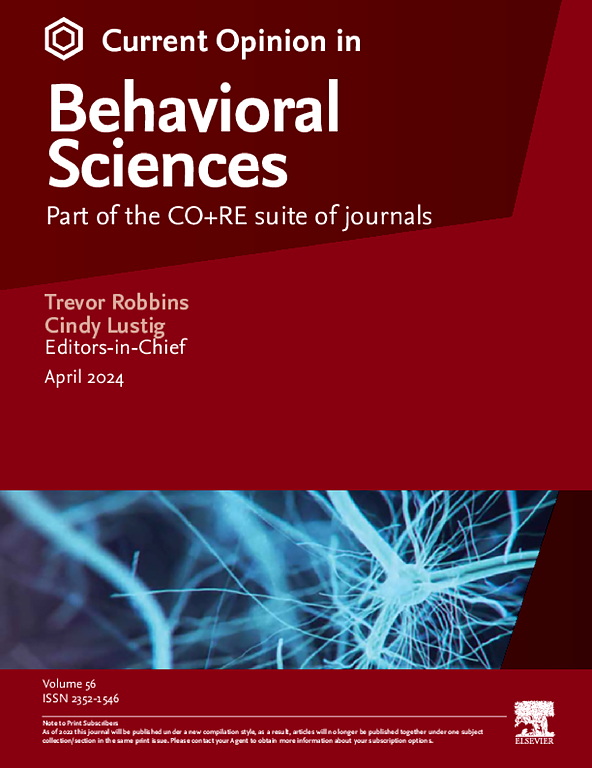转移注意力以定向或回避:纹状体尾部及其多巴胺能输入的统一解释
IF 3.5
2区 心理学
Q1 BEHAVIORAL SCIENCES
引用次数: 0
摘要
人们越来越认识到,纹状体尾部(TS)是纹状体的一个独特分支,其特点是具有密集的感觉输入和来自一组不同多巴胺神经元的投射。不同的研究方向分别描述了纹状体后部和纹状体后部投射的多巴胺神经元在以下三个领域的功能作用:向有价值的视觉刺激的眼球移动、在两个选项之间的音调引导选择以及对威胁性刺激的防御性反应。我们提出了一个框架来协调这些不同的作用,将其视为对显著刺激的保守反应的不同实现方式,TS 中的多巴胺提供了一个教学信号,促进注意力的快速转移,从而促进刺激驱动的定向和/或回避。本文章由计算机程序翻译,如有差异,请以英文原文为准。
Shifting attention to orient or avoid: a unifying account of the tail of the striatum and its dopaminergic inputs
The tail of the striatum (TS) is increasingly recognized as a unique subdivision of the striatum, characterized by its dense sensory inputs and projections received from a distinct group of dopamine neurons. Separate lines of research have characterized the functional role of TS and TS-projecting dopamine neurons in three realms: saccadic eye movement toward valuable visual stimuli, tone-guided choice between two options, and defensive responses to threatening stimuli. We propose a framework for reconciling these diverse roles as varied implementations of a conserved response to salient stimuli, with dopamine in TS providing a teaching signal to promote quick attentional shifts that facilitate stimulus-driven orientation and/or avoidance.
求助全文
通过发布文献求助,成功后即可免费获取论文全文。
去求助
来源期刊

Current Opinion in Behavioral Sciences
Neuroscience-Cognitive Neuroscience
CiteScore
10.90
自引率
2.00%
发文量
135
期刊介绍:
Current Opinion in Behavioral Sciences is a systematic, integrative review journal that provides a unique and educational platform for updates on the expanding volume of information published in the field of behavioral sciences.
 求助内容:
求助内容: 应助结果提醒方式:
应助结果提醒方式:


